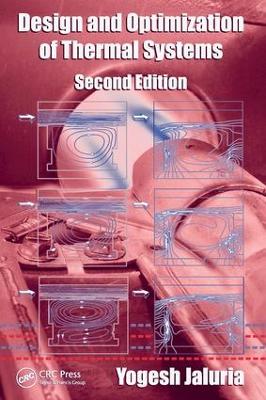Mechanical Engineering
3 total works
Design and Optimization of Thermal Systems, Third Edition
by Yogesh Jaluria
Design and Optimization of Thermal Systems, Third Edition: with MATLAB (R) Applications provides systematic and efficient approaches to the design of thermal systems, which are of interest in a wide range of applications. It presents basic concepts and procedures for conceptual design, problem formulation, modeling, simulation, design evaluation, achieving feasible design, and optimization. Emphasizing modeling and simulation, with experimentation for physical insight and model validation, the third edition covers the areas of material selection, manufacturability, economic aspects, sensitivity, genetic and gradient search methods, knowledge-based design methodology, uncertainty, and other aspects that arise in practical situations. This edition features many new and revised examples and problems from diverse application areas and more extensive coverage of analysis and simulation with MATLAB (R).
This book focuses on advanced processing of new and emerging materials, and advanced manufacturing systems based on thermal transport and fluid flow. It examines recent areas of considerable growth in new and emerging manufacturing techniques and materials, such as fiber optics, manufacture of electronic components, polymeric and composite materials, alloys, microscale components, and new devices and applications. The book includes analysis, mathematical modeling, numerical simulation and experimental study of processes for prediction, design and optimization. It discusses the link between the characteristics of the final product and the basic transport mechanisms and provides a foundation for the study of a wide range of manufacturing processes.
- Focuses on new and advanced methods of manufacturing and materials processing with traditional methods described in light of the new approaches;
- Maximizes reader understanding of the fundamentals of how materials change, what transport processes are involved, and how these can be simulated and optimized - concepts not covered elsewhere;
- Introduces new materials and applications in manufacturing and summarizes traditional processing methods, such as heat treatment, extrusion, casting, injection molding, and bonding, to show how they have evolved and how they could be used for meeting the challenges that we face today.


